
Statics is defined as equilibrium between bodies. The field of statics investigates the conditions under which the forces acting on a body are in balance. Therefore, it is the foundation of all calculations and designs of buildings, such as bridges or houses.
Different loads act on components of statics.
Natural structures
Of course, we can also find structures in nature. Your skeleton, for example, is a structure. It has to be able to bear its own weight, as well as the weight of the soft parts of your body. And, if you are carrying a shopping bag or a backpack, it has to be able to bear these additional loads as well.
In some creatures, such as snails or shellfish, the skeletal structure is external, in the form of a shell.
An eggshell is another natural structure that is strong enough to hold and protect chicks as they develop, but thin enough to break when the chick is ready to hatch.
Artificial structures
Artificial structures are based on natural structures. A tent consists of a “skeleton” of poles, that carry a “skin” made of fabric. A cardboard egg carton is a protective structure for storing eggs.
Frame structures and Shell structures
Structures can be divided into two groups - frame structures and shell structures.
Shell structure
A shell structure consists of one piece, like an eggshell. Artificial shell structures, like egg cartons, corrugated roofing tiles, or the panels on a vehicle chassis, are made of thin plastic or steel plates, which makes them lighter. The plates are shaped into ribs and curves to give them strength.
Because a structure needs to bear its own weight as well as its load, the most effective structures are those that are both strong and lightweight.
Frame structure
A frame structure consists of a number of parts that are connected to each other. The parts of a frame structure are usually called beams. For example, your spine is a beam in the frame structure of your skeleton.
Streetlights
A stable structure is a structure that is balanced and that will not fall over easily. Let’s look at the model of a streetlight in more detail. This investigation will help you design and optimize stable structures.
Task
Build the streetlight model and try each of the following methods to make the streetlight more stable. What do you observe from step to step? How does the stability change?
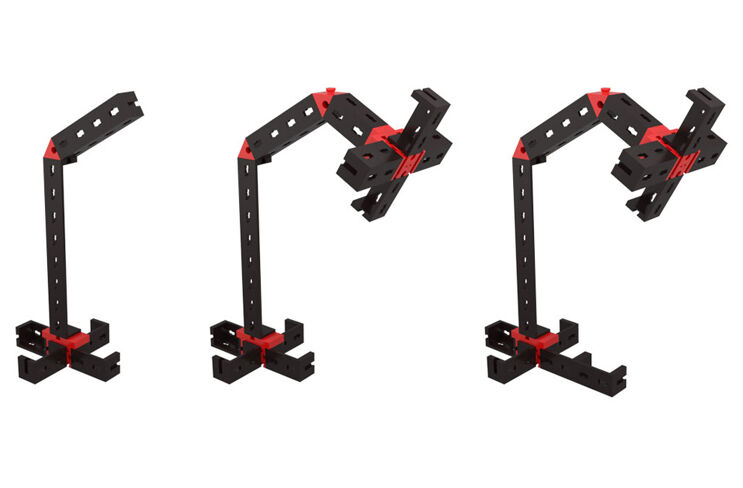
Table
A table is also a static object. It bears both its own weight, the dead weight, as well as the live weights. This primarily includes people or decorative objects, such as vases, that are sitting on a table, or accidental impacts against the table. For a table to be able to handle all of these loads, it needs a range of special static features.

Task:
The static characteristics of your model table are the angled legs. They are already stable on two sides due to the angle. The frame construction of the stool is also braced and strutted. The silver struts between the legs stabilize the frame against pressure and tension. However, the culmination of the statics are the connecting points, which form triangles. Triangles are stable even if the bars have movable joints at the connecting points. Such triangles are called static triangles. This means that your model table is statically stable in three different ways.
In statics, all of the connecting points are called nodes.
Task:
Support structures serve to transmit forces and keep them in balance. In a bridge, for instance, the supporting structure transmits the forces to the piers of the bridge, thereby distributing the load and keeping the bridge in balance.
Types of support structures
There are different kinds of support structures:
Types of shell structures
Shell structures, as indicated above, include panes, plates, and shells, which we will now explain in more detail:
Panes
A pane is defined as a flat shell structure, either consisting of individual beams placed together, or in the form of a steel panel, wooden panel, lightweight panel, etc. It is important that the load forces are applied to the plane of the support structure, so that the overall construction can be illustrated on one drawing plane. In this case, this represents a coplanar system of forces.
Plates
A plate is also a flat support structure; however, in this case, the lines of action of the load forces are vertical or angled to the plane of the plate. Plates and panes, therefore, are differentiated only in their type of load.
Shells
If a support structure is curved in one or two directions, then this is known as a shell (cylinder shell, spherical shell). Such support structures are used, for instance, as roof structures and domes. Plates and shells differ greatly in their load-bearing capacity: A pane exposed to tensile forces on all sides proves to be very stable. It can withstand relatively high forces before becoming unusable due to excessive deformation or tearing.
In contrast, a thin pane deforms when exposed to pressure. This process is called »bulging«. An example of a bulging form in statics is a curved support structure.
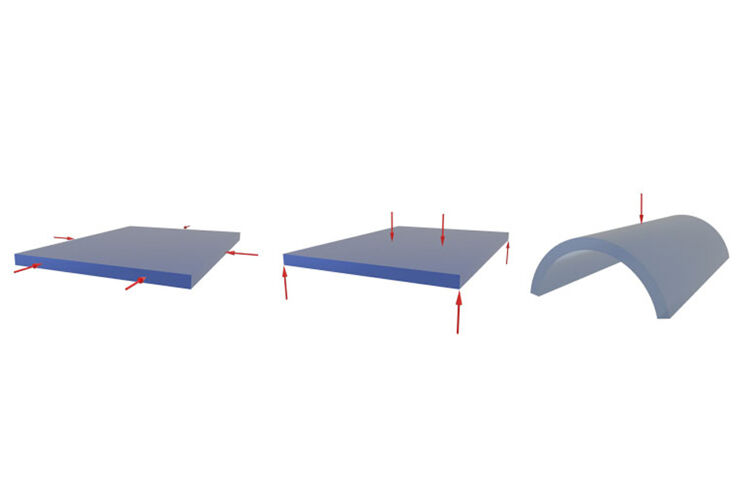
Half-timberes house
Support structures made up of beams are called trusses.
We can use a half-timbered house as a fun example for learning how stability can be changed. To do so, let's look at what happens when the model is stiff, and when it is not.
A stiff structure is a structure that maintains its shape when forces act on it.
Task
You will see that the half-timbered house is less stable in the longitudinal direction.
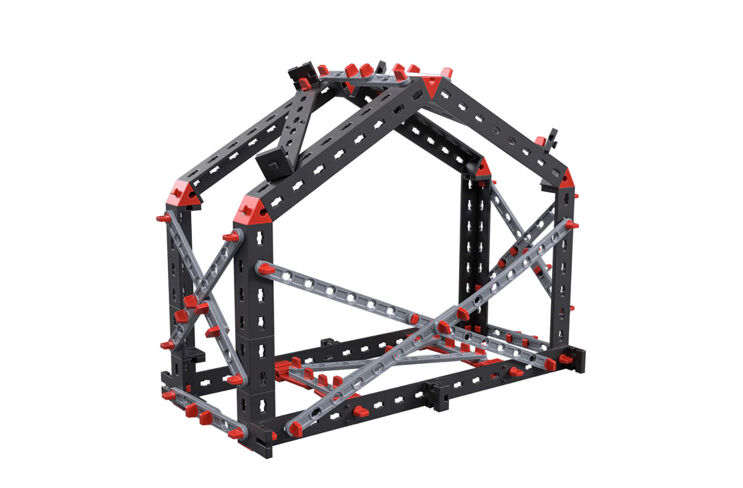
Curved support structure
The curved support structure model is a combination of the principles of shells, bulging and trusses.
Task
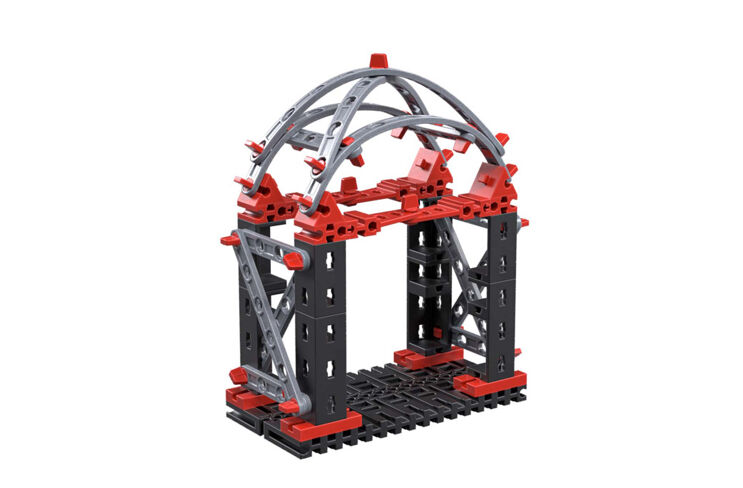
Force system
The force system model makes it possible to apply pressure to a pane - represented by a strut - using a single-arm lever.
The force on the lever is applied using a winch and a system of rollers which is similar to a pulley. The lever is subject to strong bending forces and must therefore be reinforced with an offset truss. When the winch is activated, you can observe the bending process of the pane.
Task
When the winch is turned, the forces will once again act on the two side struts; can you observe how they bend?
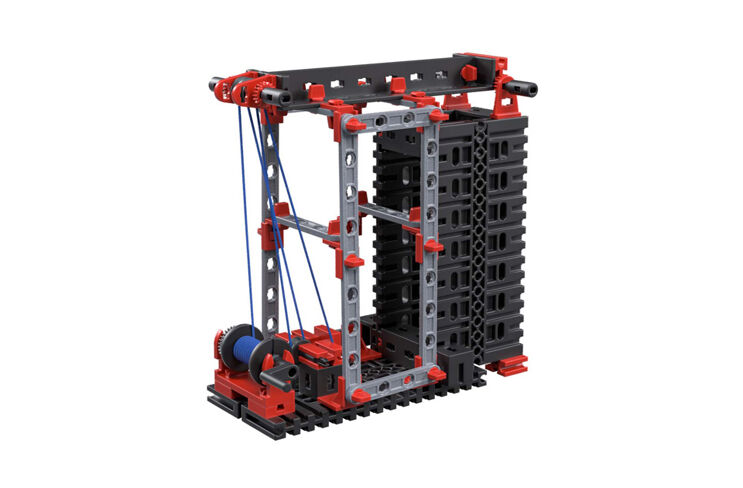
Steel Construction
Statics play a particularly important role in steel construction. This includes steel roof and warehouse structures (such as in airplane hangars), steel bridges, masts, and towers made of steel, as well as cranes and other conveyor systems.
Lookout Tower
You have probably been up on a lookout tower at some point and have been able to see a long distance; after all, that’s what a lookout tower is built for. Its purpose is to allow you to see as far as possible and give a 360° view on all sides. If a tower like this is placed in a forest, for instance, it needs to be significantly taller than the highest trees – otherwise, you won’t see anything.
Task
The principle of tension is also applied in the cable bridge model.
You did it! You have now gotten started in the world of statics and learned some basic principles. You can apply your new knowledge in the other models as well. Can you tell what ensures the stability of these models, and how you can influence it?
We hope you enjoy trying out the different possibilities!

